(Disclaimer: This page contains affiliate links. If you make a purchase from one of the links, Habitot will receive a small commission at no extra cost to you.)
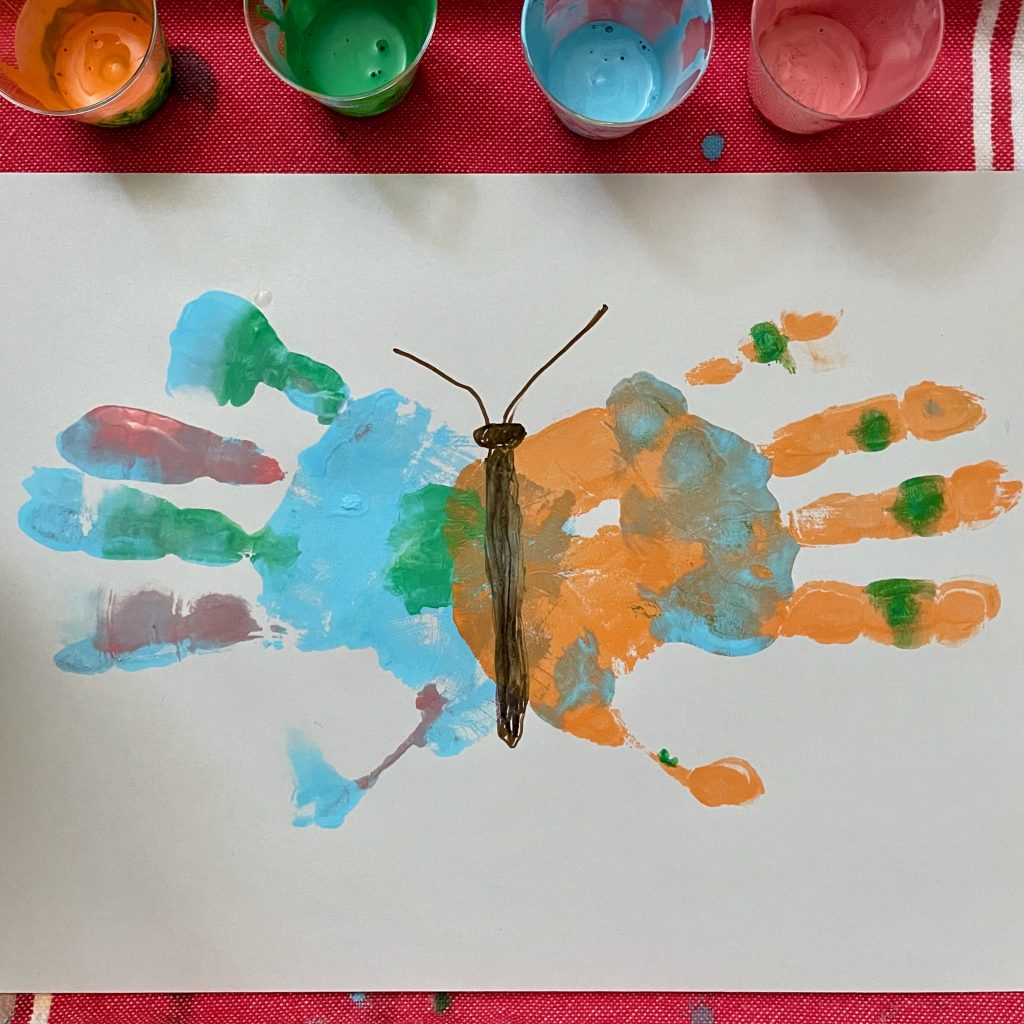
There’s so much diversity in the natural world! By creating handprint butterflies together, you and your child can explore the topic of non-binary animals, specifically chimera butterflies with asymmetrical wings that can’t be labeled as either male or female. This activity can be a springboard for talking about gender identity, gender expression, and individual uniqueness with your child.
What We’re Learning & Skills We’re Building
- Language acquisition – learning vocabulary words and concepts such as chimera, asymmetrical vs. symmetrical, and binary vs. non-binary
- Collaboration – working together to create a butterfly
- Creative expression – making individual choices about how to paint a butterfly wing
- Early biology – learning about biological diversity in the natural world
- Gender diversity – understanding that gender can be expressed in many ways and doesn’t need to fall into just two categories
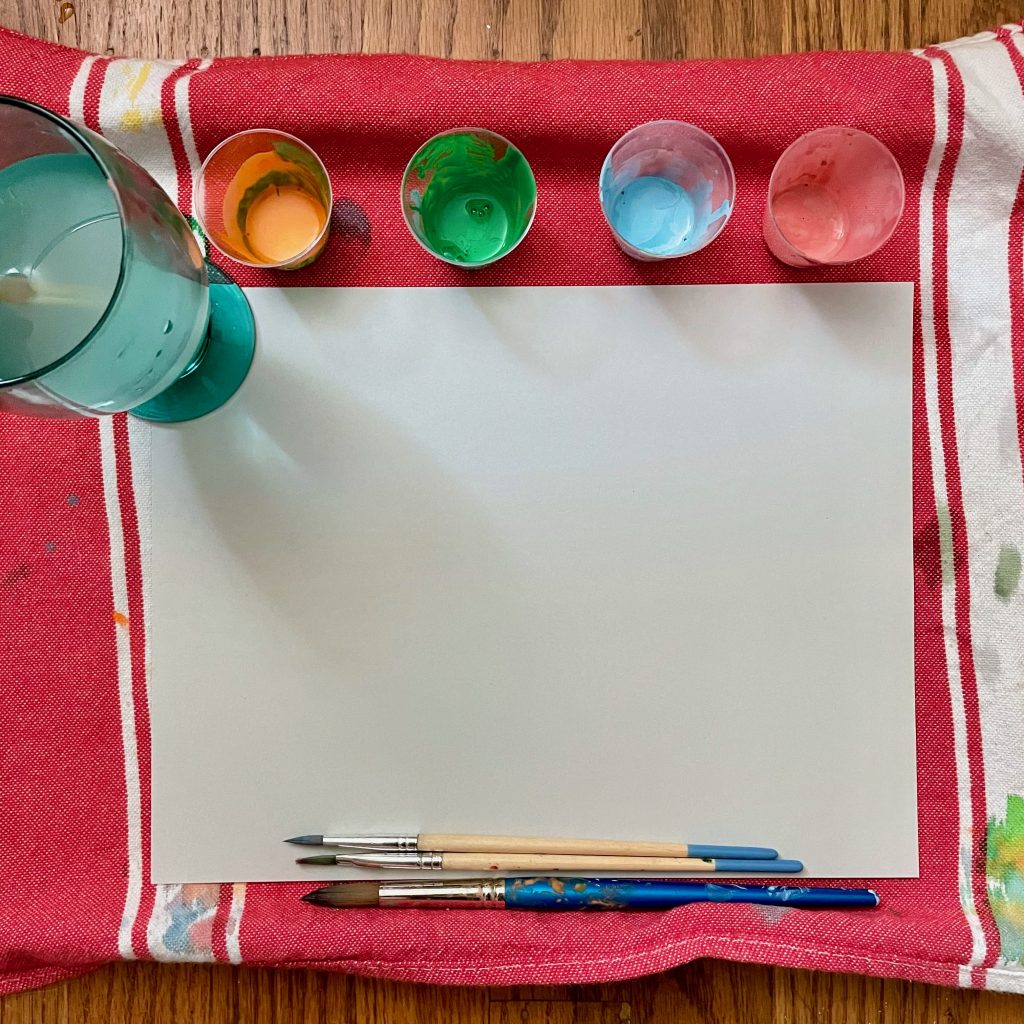
Materials
- Washable tempera paint (that’s been slightly watered down)
- Small bowls or cups for paint
- Paintbrushes
- Paper (thick paper or cardstock work best)
- Art tray to work on
Optional Materials
- Washable markers, pens, crayons, or colored pencils

Making Handprint Butterflies Together
(Note: This activity is most easily done with two people working together. A single person can do this activity by painting each of their hands with a different design. If you don’t have paint, trace your handprints with washable markers, pens, crayons, or colored pencils, then decorate inside the outlines.)
- Fill up the small bowls/cups with paint. Add a few drops of water to each bowl/cup and stir well. (Adding water helps keep the paint from drying out too quickly on hands.)
- You and your child can each paint your own palm as a butterfly wing, adding as many colors and as much detail as you want.
- Take turns stamping your palms side by side on the paper. Help each other press the other’s hand down as flat as it can go so all the paint is transferred onto the paper.
- Observe your handprint butterfly and its unique, asymmetrical wings! Talk together about the differences between the two wings – the sizes, colors, designs, and shapes.
- (Optional) Use a marker or other drawing utensil to create the butterfly’s body and antennae, or to outline the wings.
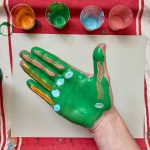
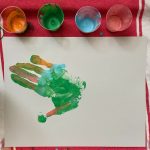
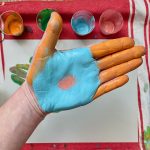
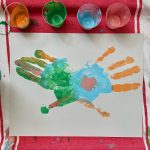
Learning About Non-Binary Animals
Some butterflies have asymmetrical wings, which are different on each side. Some have symmetrical wings, which are exactly the same size and appearance on both sides. Asymmetrically-winged butterflies are called chimera [ky-mee-ra] butterflies. Chimera animals are both male and female, and usually one side of their body has male traits while the other side has female traits. A chimera butterfly is an example of an animal that’s non-binary – it isn’t categorized as just male or female, but something different altogether. (Binary means relating to just two things, rather than many.)
Though a bit different, the word non-binary can apply to humans, too! A person who is non-binary (or gender non-conforming) may identify themselves as someone who doesn’t fall into the culturally traditional male or female category, or the traditional boy or girl category. From transequality.org: “Some societies – like ours – tend to recognize just two genders, male and female. The idea that there are only two genders is sometimes called a ‘gender binary.’ ‘Non-binary’ is one term people use to describe genders that don’t fall into one of these two categories.”
Learn more about human gender identity and how to talk to your preschooler about gender.
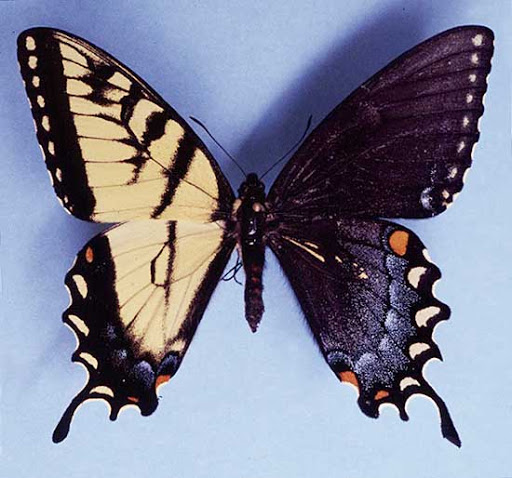
A message about butterflies as a trans and LGBTQ+ symbol
In past Pride Month celebrations at Habitot, we’ve created butterflies in the Art Studio to symbolize the transformation trans folx or others in the LGBTQ+ community might experience when coming into their identity. In talking with the community, we’ve learned that the “caterpillar transforming into a butterfly” metaphor might not represent everyone’s experience. Our friend, who’s non-binary, explained it well: “A lot of trans folx would say something more like: they always were/always knew they were a dog (for example), but people kept telling them that they were a cat, because maybe they looked like a cat.”

